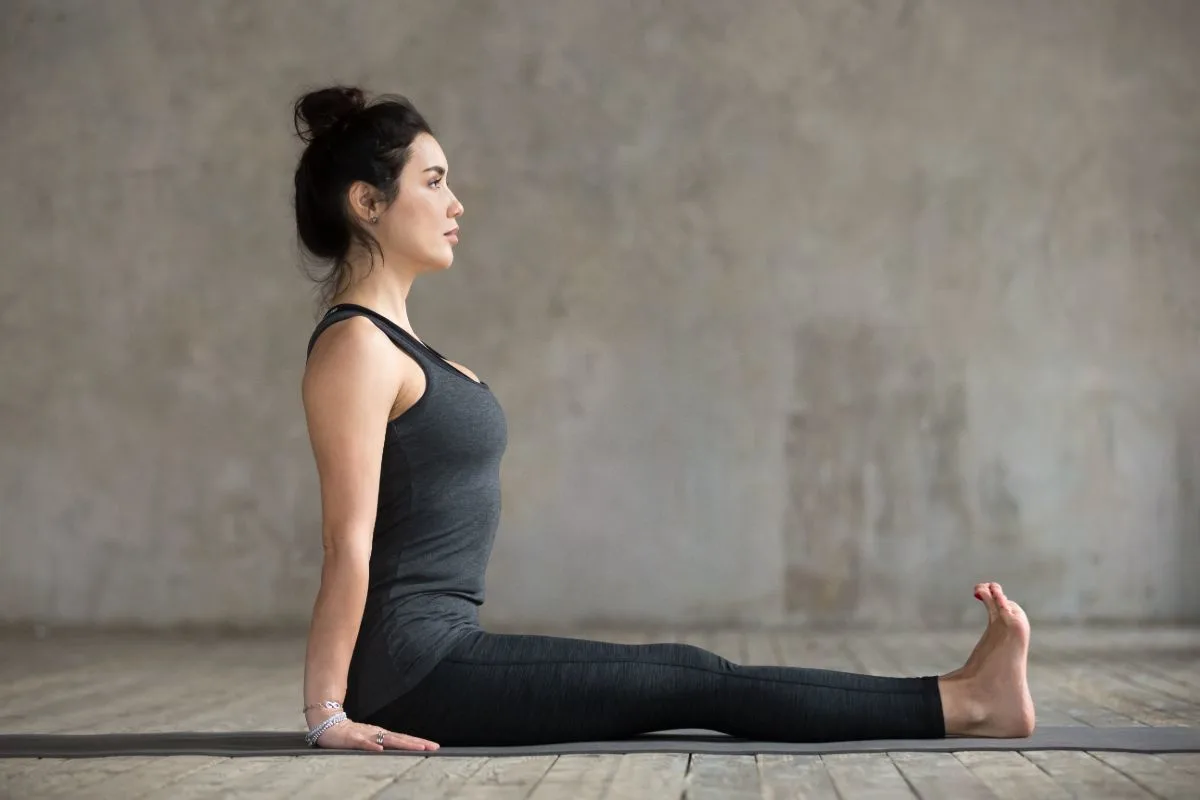The name originates from the Sanskrit words Danda – meaning “stick”, and Asana – meaning “posture”. This pose is best known as the base of all asanas in seating position, forward bends and twists.
Note – this asana is a warm-up pose for the deeper yoga poses.
To get started with this asana, follow the simple steps mentioned below:
Start in a seated position with the legs extended forward. The palms or the fingertips (if the palms don’t reach) should be rested on either side of the body.
The upper-body should be extending upward through the crown of the head, and the back should be totally perpendicular to the ground (as though sitting against a wall).
If this is not possible, one may want to use a block underneath one’s sitting bones to reduce the intensity in the hamstring muscles.
The whole core should be engaged and ujjayi breath active throughout this asana. The legs should be squeezing together, and the toes should be pointing inwards toward the body.
It may even be possible to create space between the heels and the ground by activating the leg muscles.
This asana is usually followed by Paschimottanasana (forward fold).
Staff Pose – Beginner’s Tips:
If your back is rounded and/or hip flexibility is poor, or if there is any discomfort in the back or the backs of the legs, sit on a block or folded blanket. Give more or less height depending on their flexibility.
This permits them to have a more erect spine and to sit up straighter. It also releases tension from the hamstrings and hip flexors.
Health Benefits of Stick Pose:
- Improves digestion, tones kidneys;
- Helps prevent sciatic pain;
- Stretches and activates the muscles of the legs.
- Strengthens the muscles of the back, stretches the spine and is extremely calming to the central nervous system;
- Prevents tiredness in the feet by stretching the muscles of the feet;
- Nourishes your body’s resistance to hip and back injuries;
- Creates full breathing for all areas of the lungs;
- It will help improve the overall alignment of your body.
Dandasana Pose – Cautions:
Practice against a wall if you have asthma, bronchitis, breathlessness, ulcers or bulimia. If you suffer from minor pain anywhere in your body, then you should consult your doctor or a qualified yoga teacher before you practice any type of yoga asana.
They will direct you in choosing the right yoga asana for you.
Advice:
This asana can be great as part of a regular yoga practice. If you’re looking to do core strengthening outside your practice, this can be a great pose to sit in while you’re watching TV, listening to music, and so on.
Normally, you’ll get the most advantages from the pose if you don’t have an external focus while practicing Dandasana, but simply allow your mind to stay present with your body.
